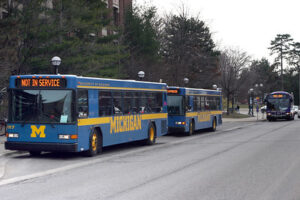Earlier this month, California legislators announced a plan to retract funding from California State University campuses that are losing enrollment. The legislature would then distribute the funding to CSU campuses that exceeded their enrollment targets.
The new plan, which takes effect in 2024-25, will permanently reduce funding by 5% for any campus that misses its enrollment target by more than 10%. Currently, 7 campuses have lost more than 10% of their enrollment since 2020. Following the first reduction, any campus that misses its enrollment target by 7% will lose 5% of its state funding. In the third year of the plan, campuses that lose 5% of their enrollment will permanently lose 5% of their state funding. That could amount to a more than 20% reduction in state funding over a period of three years.
While the Cal State system has suffered from sharp declines in transfers from the state’s community colleges, Cal State campuses are losing enrollment primarily because students don’t persist from year to year. Attrition in the 2021-22 academic year among freshman students was nearly 20%. Additionally, enrolled students are taking fewer classes per semester, which leads to a significant loss in instructional hours per campus.
Further, the state expects to “lose” about a half-million K-12 students between 2020 and 2030. This will have a longer term impact on post-secondary enrollment. Currently, CSU campuses have an acceptance rate of nearly 90%.
To counter the trend of losing enrollment, CSU plans new marketing efforts; a dual-enrollment program with the Los Angeles Unified School District and local community colleges; and new student housing at certain campuses. They’re also appealing to students who left campus during the height of the COVID-19 pandemic and didn’t return.
Losing enrollment could get expensive
The plan gives the affected CSU campuses just one year to turn enrollment declines around. It also sets the stage for campuses that are not currently losing enrollment to put retention plans in place for current students.
In Michigan, the legislature has not yet reacted financially to sharp declines in community college enrollment. Instead, lawmakers have funded free community college programs for adult learners who do not yet have at least 60 college credits. But the California approach to higher education funding does offer a solution for community college trustees who feel comfortable complaining about “declines” in state funding: increase your enrollment.
To date, Washtenaw Community College has not been able to take advantage of the Futures for Frontliners and the Michigan Reconnect programs to increase its enrollment. While students in these programs have enrolled at WCC, their numbers have not been high enough to counter greater declines in both headcount and credit hours.
The State of Michigan’s community college funding formula does have an enrollment component, so eventually, losing enrollment will result in a decrease in state funding. As long as Lansing seems to be looking the other way, now seems like the time to come up with programs to attract students and support new industries in the county.
(Unless, of course, that’s too much to ask from WCC’s exceptionally large and highly compensated executive team.)
Photo Credit: Michael Ocampo , via Flickr














